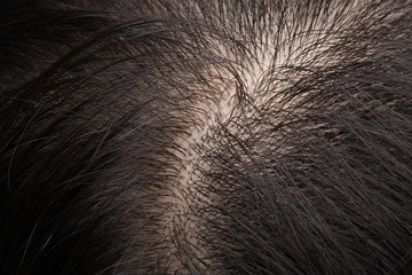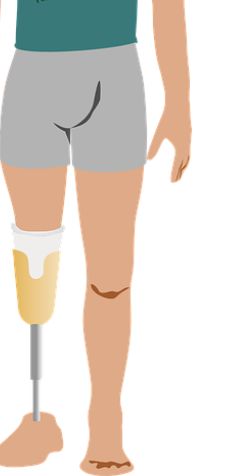How Hair Loss in Men and Women Can Be Treated with Scalp Micropigmentation?

When it comes to the beauty and makeup industry, most possibly, the latest feather has been attached to its cap is scalp micropigmentation, globally acknowledged as SMP. The technique of SMP has been acknowledged as a permanent solution for male and female hair loss; however, the whole approach is cosmetic base. Initially designed for men, with further evolvement, more and more women now search for scalp micropigmentation near me to combat their annoying thinning hair issues.
The procedure of scalp micropigmentation involves applying pigments into the thinning area or layer of scalp by means of digitally controlled needle. Unlike traditional tattooing, the kind of pigments used for SMP is basically, plant-based organic matter and are FDA approved.
The Variation among Technique
While millions of women have found SMP as a ‘second-to-none’ choice to address thinning hair, equally, numerous feel scary or embarrassing about its appearance. For anyone having haziness on this issue, should note carefully, that the technique followed in SMP for female type baldness is completely different from men. Whereas men receive SMP with the outlook of replicating their head with shaven hair follicles, a woman is offered the treatment with the objective to diminish the contrast between their existing hair and the virtually exposed scalp. Understanding this difference is important because it totally changes a technician’s approach of providing treatment.
Typically, when it comes to baldness nature, man experience bald in a set of pattern, which may include declining front hairline, reduction of the crown, which eventually can end in complete baldness. This kind of balding is a rare case for women while they typically undergo diffuse thinning and fair amount of hair loss across the entire scalp, although unlikely to go wholly bald. Which is why addressing women’s baldness is much critical and needs specialized knowledge. This requires you to contact a renowned scalp micropigmentation clinic.
Women Treatment Procedure at Scalp Micropigmentation Near Me
Among the key causes of female pattern hair loss, include hereditary, menopause and aging, emotional trauma, childbirth, alopecia, Lupus and side effect of medication. Typically, the hair-thinning problem of each client is of different nature and that needs customization of treatment plan.
In choosing, the depth, and texture of pigments, the natural hair color is taken as the base and in order to offer a ‘full head of hair’ 3-D illusion, one-step darker shade is applied to get the desired look. With intent to offer more natural look, and fill the gaps, experts make use of replicated hair follicles integrated with virtually lighter to deeper shades with different kinds of needles. Adding of imitate threads with skilled hands appear alike growth of new hair follicles employed in the diffusing areas as well as frontal hairline with topmost diligence. To address the crown and sides of thinning hair usually denser shades are used to add contrast to the color of hair and the scalp. In general, the female SMP session can take nearly 3-4 sessions while you can gradually experience the magic.
Male Baldness Treatment: Scalp Micropigmentation Near Me
Male pattern baldness is widespread all over the world, accounting for as near as 95% of male go through hair loss phase over their 50’s. The term male pattern hairlessness refers to androgenetic alopecia. The issue is related with the diminishing of male sex hormone, thus, should not be explained as an ailment or medical condition that contributes in male balding. The other causes may found in the form of effluvium disorders, alopecia, extreme stress, and panic in addition to genetic.
Look for ‘scalp micropigmentation near me’ which is prepared with advanced devices used in SMP, ranging from scientifically advanced needles, robotically controlled shade analysis machines, trained technicians with background in SMP technology. The highly sophisticated cosmetic procedure inserts dots of pigments on your scalp matching to the natural hair color and skin tone. Keep in mind, even though, it is considered as a type of tattooing, however, the approach and technique is absolutely different. Once completed it will appear alike a full head of shaved hair. It takes around 2-3 sessions apart from initial consultancy to boast your personality with a modish haircut.
Cold Therapy after Amputation

Amputations can sometimes be necessary due to health problems or complications. Injuries, trauma, poor circulation (due to diabetes, narrowing of arteries), and frostbite are some of the reasons that can require amputation of a limb.
Cold Therapy and Recovery after Amputation
The recovery and essential rehabilitation process after amputation can be long and tough. It requires extensive physical therapy along with other therapeutic treatments. One such effective healing remedy for recovery after amputation is use of cold therapy. It can be administered using cold therapy units that are convenient to use and offer optimal healing.
Cold therapy can reduce pain and swelling on the amputated site. It can also prevent complications such as edema, which can occur after amputations. Cold therapy can heal tissues and prepare them for prosthesis.
Ice therapy machine is designed with innovative technology to provide efficient cold therapy. Use of a cold therapy unit can be the difference you have been looking for in terms of benefiting fully from this healing remedy.
Benefits of Cold Therapy
Cold therapy units are designed with advanced technology but with ease of use in mind.
Effective healing –
Cold therapy units come equipped with therapeutic pads that can wrap around the entire area that requires healing and allows cold water to circulate around the treatment site without interruptions and offer optimal healing.
Another advantage of using a cold therapy unit is that it offers ‘dynamic’ healing as opposed to ‘static’ healing provided by traditional ice packs. Dynamic healing means there is steady movement of water for better heat transfer. Efficient heat transfer occurs when differences in temperatures is to quite a degree and with efficient flow of cold water on the treatment site. Healing can accelerate with better heat transfer on the treatment area.
Efficient use –
With use of advanced and improved technology, there is no risk of infections due to dripping of water on the amputated site. Now, this is a risk when ice packs or frozen pea bags are used for cold therapy. When it comes to surgical sites, it is important to keep them free of infections. Infections can hinder the recovery process and also cause complications in some cases.
Ice machines can be used for prolonged periods without needing to replenish ice or risk of side effects. The temperature remains comfortable enough to tolerate even after hours of use. The fact that it can be used for prolonged and also long-term use means that a cold therapy unit can help manage pain that can occur with prosthesis use.
Pain management –
Using prosthesis requires practice to reach a desired level of comfort. Pain can occur on the amputated site due to prosthesis even after its regular and habitual use. Cold therapy can be beneficial in such cases to reduce pain and swelling from prosthesis use and help people with amputations to continue with their normal routines with greater comfort.
Pain reduction with cold therapy means less reliance on medications. Use of pain medication is not recommended for long-term use. It is simply not a viable option to use pain reducers to manage discomfort from use of prosthesis. Even before prosthesis fitting, pain can occur on the amputated site. Only sporadic use of medicines to relieve pain is recommended by doctors and it is easier to manage pain and rehabilitation with cold therapy and physical therapy.
Convenient handling –
Using cold therapy units is easy and convenient. These devices are fitted with self-priming pumps, which allow users to simply fill in the water and ice and plug in the machine. There is no need to replenish ice in quick succession and there is no hassle of cleaning any dripping water.
The pad itself is comfortable to use on amputated sites. You can use the machine and relax while the cold therapy heals the body.
Vaccination Schedule Recommended Pediatricians for Children

Vaccinations are administered to infants, children, and young adults to help them lead a healthy life. These preventive medicines keep them protected from diseases that are commonly found in people of this age group. Vaccines ensure that children are safeguarded from mild to serious illnesses, which may render them severely disabled, or put them in life threatening situations. These need to be administered as per a pre-defined schedule, the failure of which may render it ineffective in protecting your child. Pediatricians are doctors who specialize in care of infants, babies, and children. These medical practitioners recommend following the given schedule for children above the age of 1, up to the age of 11, for maximum protection.
• 15 months: Tetanus/ Diphtheria/ Pertussis, Haemophilus Influenza B The vaccines to be administered after the dosages completed on first birthday are the DTaP vaccine as well as the Hib vaccine. DTaP protects against three serious and life threatening diseases.
o Diphtheria – A bacterial disease that causes a thick covering to form in the back of your child’s throat. It can lead to breathing problems, paralysis, heart failure, and even death.
o Tetanus (Lockjaw) – A disease that causes painful tightening of the muscles, usually all over the body. It often leads to ‘locking’ of the jaw, which makes it difficult for the child to open the mouth or swallow.
o Pertussis (Whooping Cough) –A bacterial infection that causes severe coughing spells, which makes it hard for infants to eat, drink, or breathe. It can also lead to can lead to pneumonia, seizures, brain damage, and eventually death.
Hib protects against Haemophilus influenzae type b disease caused by bacteria. The disease often results in bacterial meningitis, pneumonia, breathing difficulty, infections of the blood, joints, bones, and covering of the heart, and in rare cases, death.
• 2 Years: Hepatitis A vaccine
Hepatitis A is a serious liver disease, characterized by symptoms such as fever, fatigue, loss of appetite, nausea, vomiting, or joint pain, severe stomach pains and diarrhea, or jaundice. The disease causes liver failure and eventually death. The first dose of Hepatitis A vaccine is given at the age of 1 year and then repeated at the age of 2 years.
• 4 Years: Varicella (Chickenpox) booster
The booster dose for chicken pox is a vaccination that re-introduces your child to immunizing antigen. It helps build better immunity against the common childhood disease, which causes a rash, itching, fever, and tiredness. The disease may also result in severe skin infection, scars, pneumonia, and brain damage. The booster vaccines is helpful in restoring the antigen back to protective levels.
• 5 Years: Tetanus/ Diphtheria/ Pertussis, Measles/ Mumps/ Rubella (MMR), Polio, Hearing and Vision Screening.
The DTaP and MMR vaccines are re-administered when the child turns 5 years old. He/she may also be screened for hearing and vision to check for disabilities or impairment.
• After the age of 5, children can be subjected to well visits annually or when needed (for sports, camps etc.)
• After the age of 9 to 11, suggested vaccines are HPV and Meningitis, along with a booster dose for Tetanus/ Diphteria/ Pertussis at the age of 10 to 11 years.
Timely and proper vaccination can help your child lead a healthy childhood and adulthood. Pediatricians are your go-to source for necessary help, and for administering the vaccines to your child at the right time.
How Group Therapy Can Help You

Therapy helps a lot of people to deal with their problems, connect to themselves, to have a fresh perspective about their problems and the wonderful life that lies in front of them. Sharing our feelings and fears with somebody gives a concrete shape to our thoughts. Sharing gives you clarity on your own thoughts and helps you find your own answers. Therapy can either be individual with a face to face interaction with your counselor. Or it can be a group therapy where you can find people with problems simpler or complex than yours. You will find people whom can talk to, people who can understand your problems or at least be empathetic and listen.
All of us have problems and sometimes a simple solution to our problems is just to share our thoughts and opinions with a group of people who will listen and relate to you. If you live in the US and have a few unresolved thoughts that are taking control of your life, a group therapy is what you might need. Here are a few advantages of group therapy listed out for your consideration.
1. You get a chance to speak up
Help and support from others is sometimes what you need to pick yourself. All you want is to be heard out, give a shape to the thoughts running wild in your head. All you need sometimes is someone who will listen. If you are not comfortable with the idea of talking to a counselor alone, you can choose a group therapy where people just like you talk to each other and more importantly listen to each other. After a few sessions of group therapy you won’t feel like nobody cares about your problems. You will realize all you have to do is open up to the right people and confront your problems.
2. You will feel involved
Our thoughts are very stubborn and people who need group therapy are those who feel that nobody understands them. People who think nobody understands them are stuck in their own though bubble. They never realize that there are countless other helpless people like them and they are not the only ones with that specific problem. A group therapy will help you look at your problems from others’ perspectives and come out of your thought bubble. Your problem might be too small for you to realize and a group therapy can help you see it clearly.
3. You will find relatable people
The best part about group therapies is that people help each other and in turn help themselves. They listen to each other’s feelings, talk something that is relatable to the discussion, give examples of their own life. The reason for people to open up during these sessions is that they feel someone can relate to what they are seeing. A sense of oneness comforts them and neutralizes their suffering. If you want to make some good friends and just find people who you can relate with, a group therapy is a good place to start.






